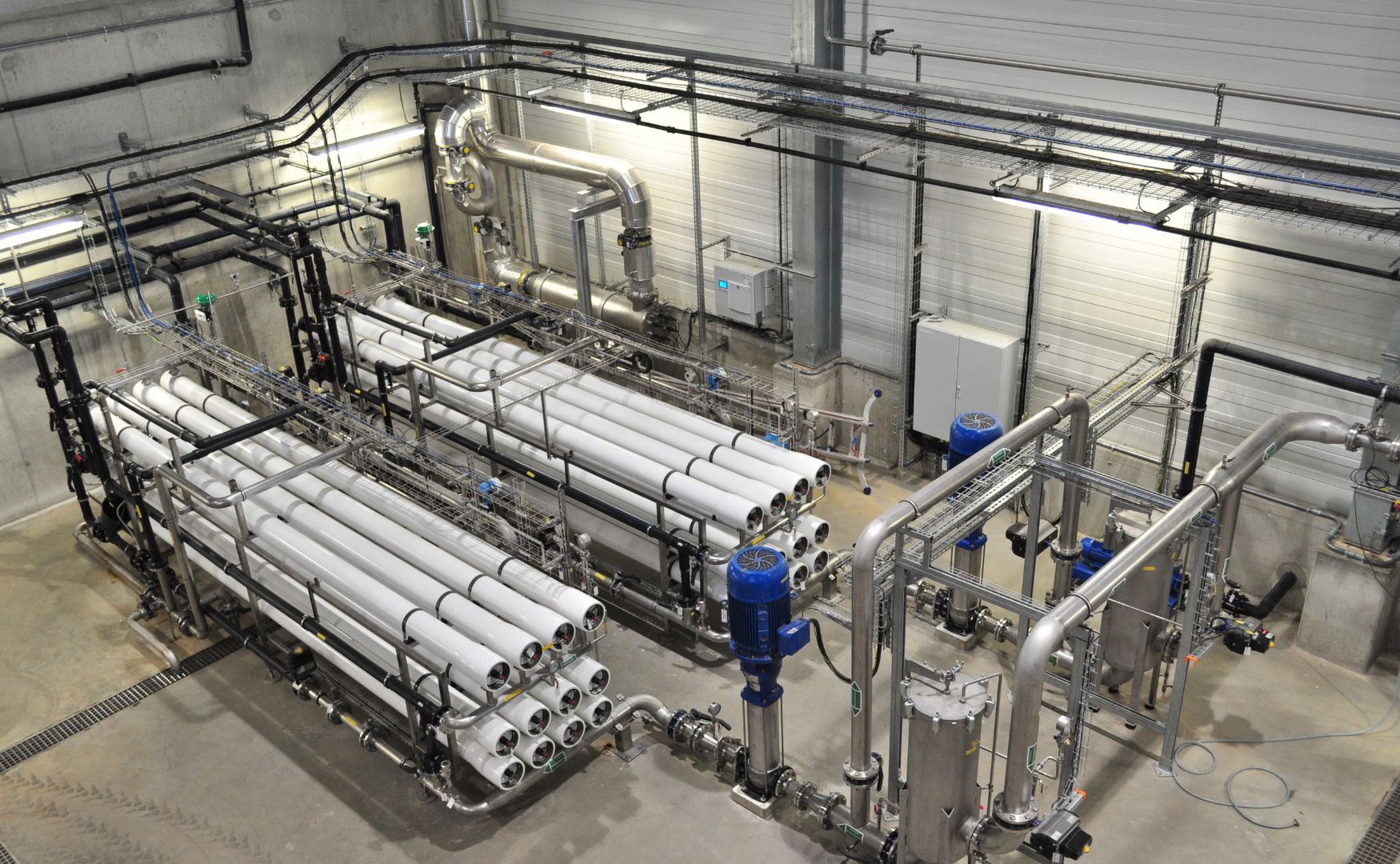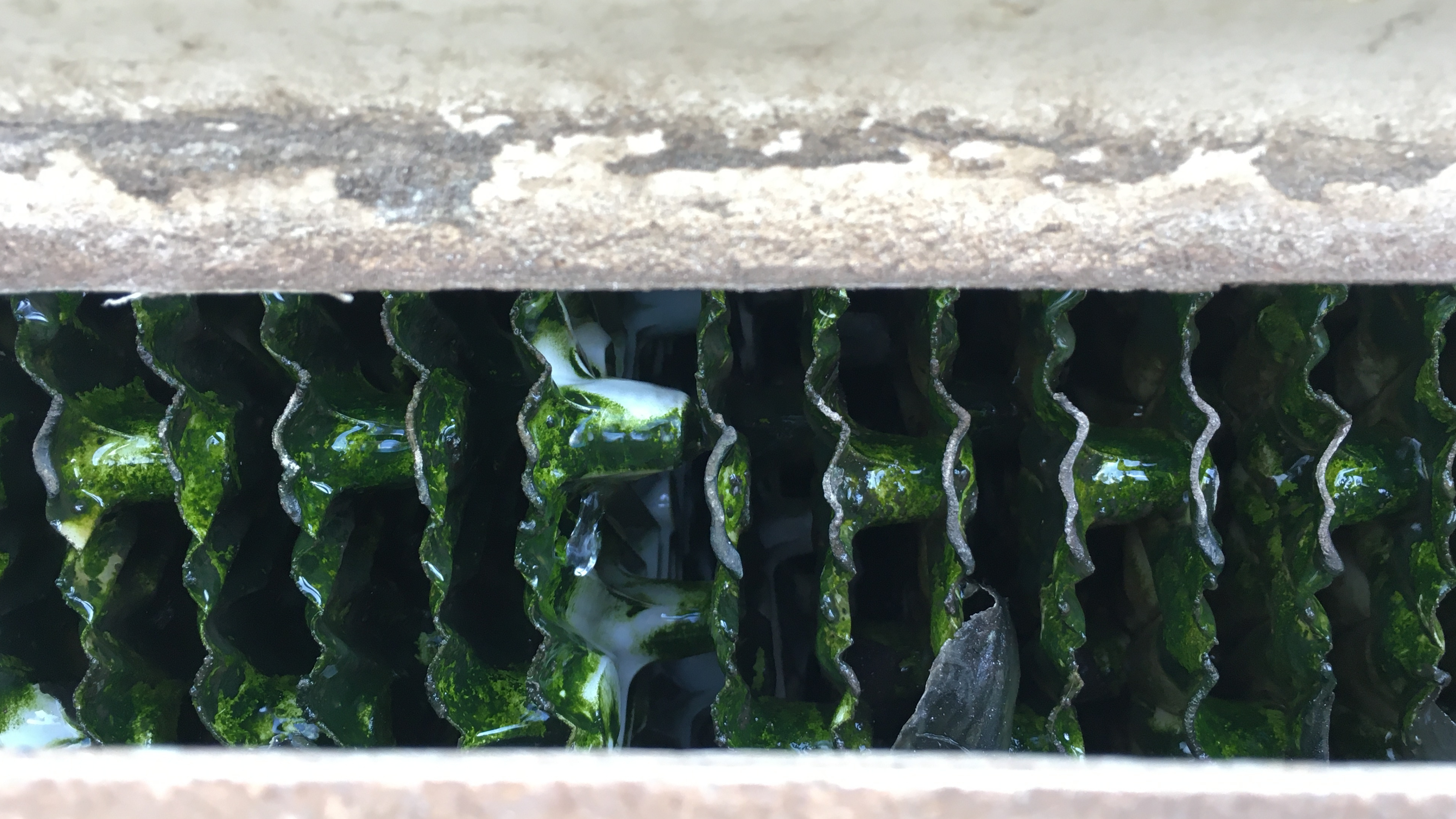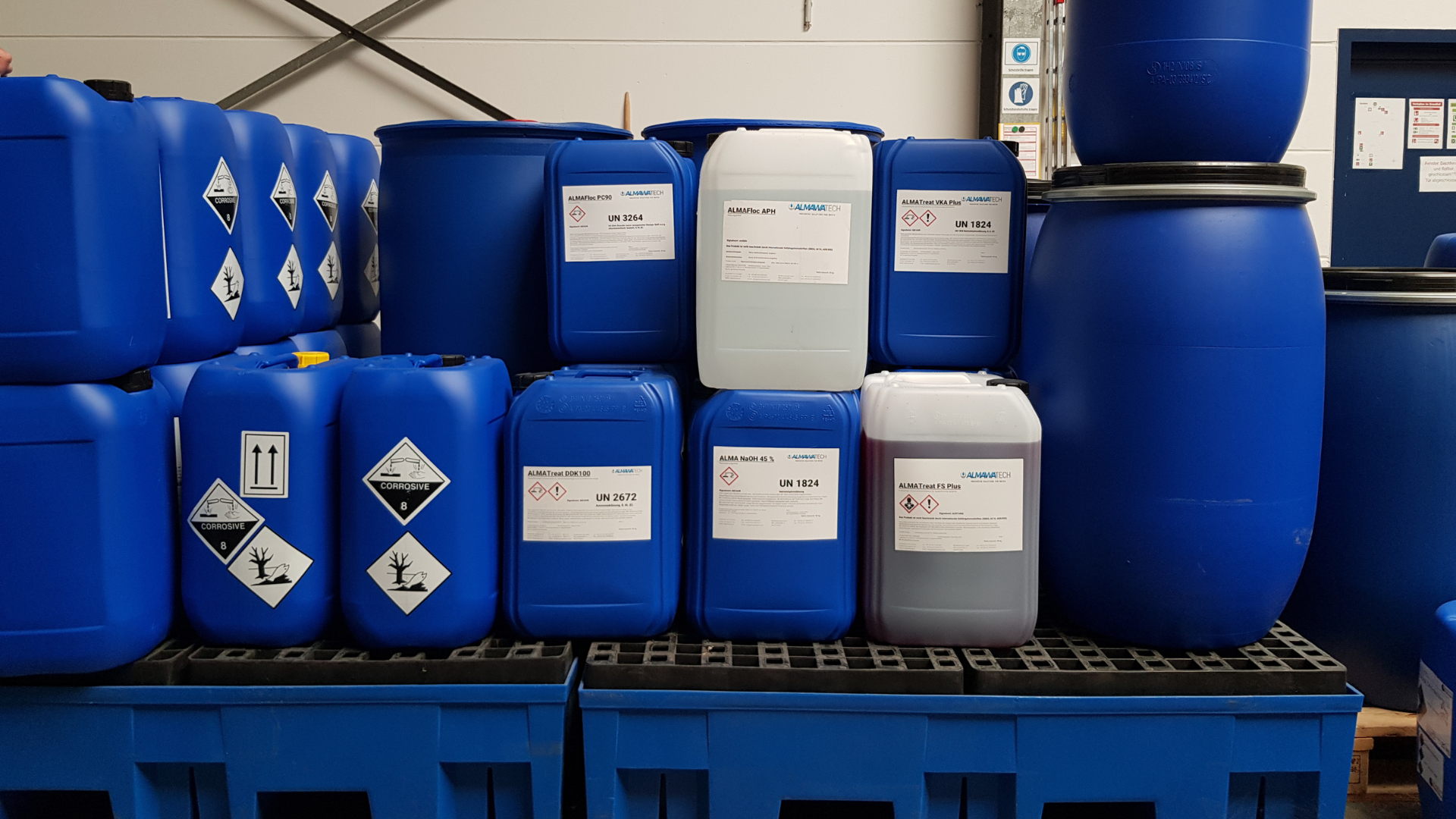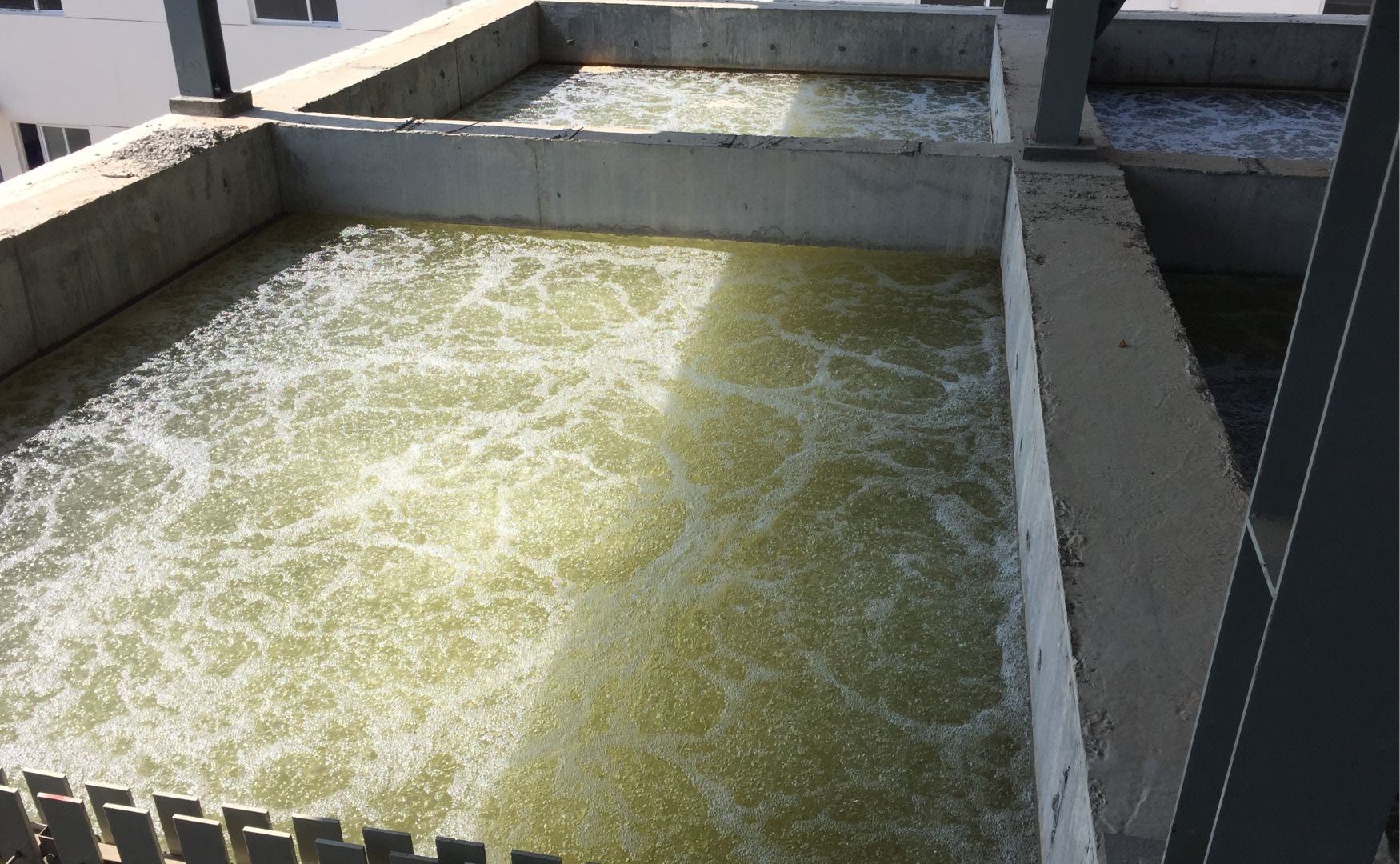Biofouling refers to the biological fouling of surfaces in water treatment plants, particularly on membranes, pipes, heat exchangers and other components that come into contact with water. It is caused by the growth and accumulation of microorganisms such as bacteria, algae, fungi and other biofilms, which accumulate on surfaces and form a slime layer (biofilm). This process can significantly impair the efficiency of water treatment systems, increase operating and maintenance costs and shorten the life cycle of membranes and other system components.
Table of contents
Technical background
Biofouling often occurs in membrane filtration systemscooling water circuits and other water-bearing systems, as the microorganisms are transported through the water and can colonize surfaces that are supplied with nutrients during operation. Biofouling is particularly problematic in membrane systems such as reverse osmosis (RO) or nanofiltration, as it blocks the pores of the membranes and drastically reduces the flow rate and filtration efficiency. In cooling circuits and heat exchangers, biofouling leads to a reduction in heat transfer performance and can increase the risk of corrosion.+

Photo: ALMA BHU BiosS-Treat reverse osmosis system for recovering process water from wastewater
Causes and mechanisms of biofouling
Biofouling usually begins with the colonization of microorganisms on surfaces in contact with water. These microorganisms form a biofilm within a short period of time, which becomes denser as bacteria multiply and organic substances and sediments accumulate. Typical mechanisms that lead to biofouling are
Adsorption of organic substances: Organic compounds dissolved in water provide an ideal breeding ground for microorganisms. These substances adhere to surfaces where they promote the growth of biofilms.
Bacterial proliferation: Bacteria begin to multiply on the surface and form a dense, slimy layer that impedes the flow of water and impairs membrane performance.
Biofilm formation: Over time, the biofilm grows in thickness and density, which further reduces the permeability of the membranes and increases the operating pressures in membrane systems.
Deposits and sediment formation: In addition to the microbiological component, sediment and particles can also accumulate in the biofilm, which further exacerbates the problem.
Effects of biofouling
Reduced flow rates: In membrane systems, biofouling leads to clogging of the membrane pores, which reduces the permeate flow (water filtered through) and impairs the efficiency of the system.
Increased operating pressure: As biofouling reduces the permeability of the membranes, the operating pressure must be increased in order to pump the desired amount of water. This leads to higher energy consumption and wears out the membranes more quickly.
Corrosion and deposits: In cooling circuits, the organic deposits caused by biofouling can lead to corrosion occurring under the biofilm, as certain areas are no longer evenly supplied with coolant.
Increased maintenance costs: Frequent cleaning cycles and the use of chemicals are required to combat biofouling. This increases maintenance and operating costs and leads to system downtime.

Photo: Biofouling on a heat transfer surface
Prevention and control of biofouling
Combating biofouling requires a combination of preventative measures and chemical cleaning processes that are specially adapted to the respective system and water treatment system. ALMAWATECH offers a range of products for the prevention and control of biofouling under the ALMA AQUA brand:
1. ALMA AQUA membrane cleaners and antiscalants for membrane systems
ALMA AQUA membrane products (membrane cleaners and antiscalants) are specially developed chemicals for cleaning membrane systems and preventing deposits and biofouling. Antiscalants prevent the formation of limescale deposits and organic sediments, while the membrane cleaners effectively remove biofilms and organic fouling from the system.
Antiscalants: These substances prevent the formation of scaling deposits on the membrane surfaces, which often form the basis for biofouling. The use of antiscalants suppresses the formation of a biofilm, as the adhesion of organic and inorganic substances is made more difficult.
Membrane cleaners: These cleaners effectively remove biofilms, organic substances and other contaminants from the membranes. Regular cleaning processes help to maintain the performance of the membranes and keep the operating pressure low.
2. ALMA AQUA cooling water bioinhibitors and biocides
In cooling water circuits, the control of biofouling is equally important to maintain heat transfer performance and prevent corrosion. ALMA AQUA Cooling Water Bioinhibitors and Biocides are highly effective chemicals specifically designed to prevent biofouling.
Bioinhibitors: These products prevent the growth of microorganisms by inhibiting biofilm growth. The use of bioinhibitors reduces the build-up of biofouling, which increases the efficiency of the cooling systems.
Biocides: Biocides kill existing microorganisms and prevent them from multiplying. In combination with corrosion inhibitors, hardness stabilizers and dispersants, biocides help to ensure the chemical stability of the cooling water and effectively control biofouling.

Photo: ALMA AQUA membrane and ALMA AQUA cooling water operating fluid
Biofiltration systems for the reduction of biofouling
ALMAWATECH offers the ALMA BHU BAF and the ALMA BioFil Compact two specialized biofiltration solutions that are not only used for biological wastewater and process water treatment, but also contribute effectively to the reduction of biofouling in downstream membrane systems. The ALMA BHU BAFdesigned for water flows of up to 1,000 m³/h, and the ALMA BioFil Compactfor smaller wastewater flows of up to 100 m³/h, use specially prepared filter media that promote a high level of biological activity.
The targeted degradation of organic residues and nutrients, which typically promote the growth of biofilms, significantly reduces the organic load in the water prior to membrane filtration. This minimizes the risk of biofouling and extends the service life of the membranes, which also reduces operating costs and cleaning effort. Thanks to efficient nitrification and denitrification, these systems also contribute to the removal of nitrogen compounds, which also inhibits the growth of biofilms in the membrane systems.

Advantages of ALMA AQUA products and biofiltration solutions
Effective prevention of biofouling: Through the use of bioinhibitors and biocides or biofiltration systems the growth of microorganisms is suppressed before a biofilm can form. In particular biofiltration reduces organic residues and nutrients that promote biofouling, which significantly increases the operating efficiency of the systems.
Optimized system performance: Regular cleaning with ALMA AQUA membrane cleaners and the targeted use of biofiltration (e.g. with ALMA BHU BAF or ALMA BioFil Compact) ensures that the membranes in reverse osmosis and nanofiltration systems remain free of blockages, the flow rate remains stable and the service life of the membranes is extended.
Conclusion
Biofouling is a common problem in membrane systemscooling water circuits and other water-bearing systems, which can lead to performance losses, higher operating costs and corrosion problems. By using the ALMA AQUA membrane cleaners, bioinhibitors and biocides as well as a biofiltration system (such as ALMA BHU BAF or ALMA BioFil Compact), ALMAWATECH offers a comprehensive solution for the prevention and control of biofouling.
These products and systems help to optimize system performance, reduce operating costs and extend the life of system components while minimizing maintenance. The combination of chemical solutions and biological pre-treatment provides an effective strategy to sustainably control biofouling and maximize the efficiency of modern water treatment and wastewater systems.







